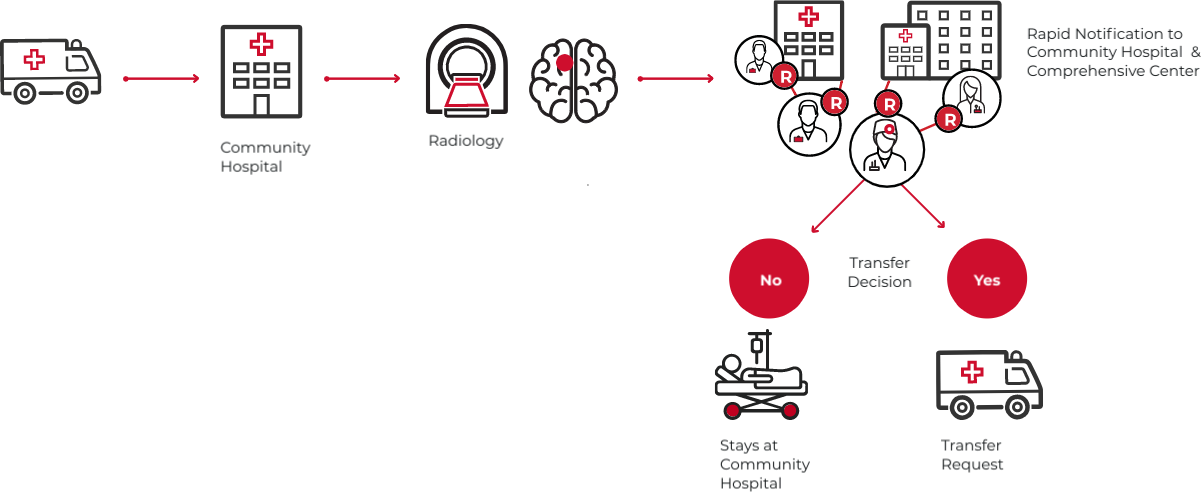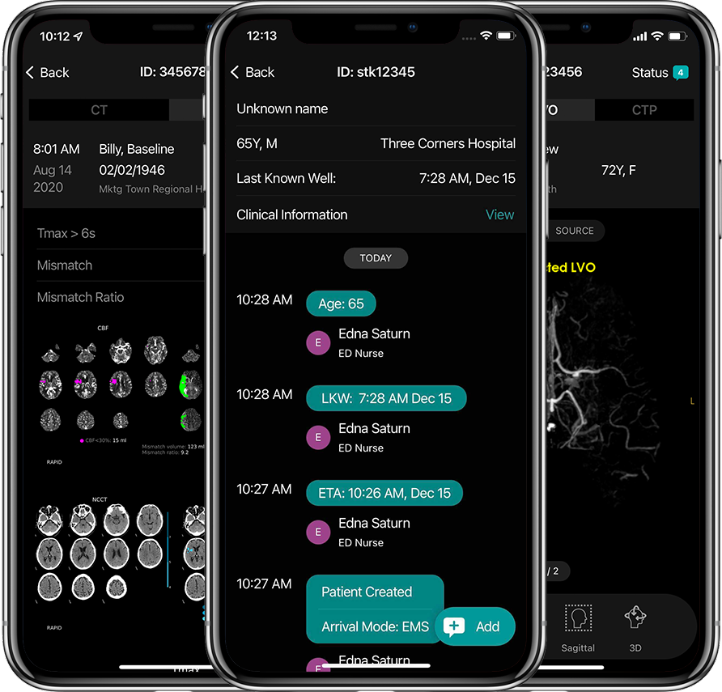EASING THE PRESSURE OF STROKE PATIENT CARE
How to Speed Up Door-to-Decision Time

Real results
Arrival to CTA
66%
reduction in time
Door to Neuro Lab Activation
50%
reduction in time
St. Luke’s Baptist Hospital
See More Real Results

How can your community hospital reduce door-to-Decision time?
Quickly and accurately diagnose stroke, even when no symptoms are exhibited, and rule out those with symptoms that mimic stroke
Reduce the number of phone calls and time spent going back and forth with other physicians
Easily tap into stroke expertise from thrombectomy-capable hospitals
Enable simultaneous notification of scan results and patient data

Getting the right patient to the right care at the right time
RapidAI workflow and communication tools, combined with AI-powered clinical decision support, can help significantly reduce the time spent coordinating care by facilitating real-time collaboration and data sharing across hospital networks. Team members can see the same patient data and preview the same scan results in real-time.
CONNECT HOSPITAL TEAMS. SHARE SCAN RESULTS. DECIDE.


The Rapid Stroke Platform Helps Drive Better, Faster Decisions and Patient Outcomes
- Quickly triages NCCT, CTA and CTP scans and notifies clinicians at both the referring community hospital and the comprehensive treatment center of suspected ICH or LVO
- Includes the only automated FDA-cleared ASPECTS scoring module, helping physicians, including non-expert readers, quickly assess patient eligibility for thrombectomy
- Provides simultaneous access from anywhere at anytime to source images and Rapid enhanced maps and data via mobile and desktop devices, enabling faster team coordination and assistance from neurology specialists
- Allows for HIPAA-compliant messaging and sharing of patient clinical data to streamline workflow by allowing teams to efficiently communicate and collaborate
- Helps clinicians clarify the diagnosis in the 80% of patients who do not have an LVO by providing more extensive CTA and CTP imaging data, such as colored overlays of blood vessel density and detailed information about blood flow, transit times, and blood volume as well as mismatch maps.
More real results
Reduce unncessary transfers with Rapid
Before Rapid: 62% unnecessary transfers
After Rapid: 5% unnecessary transfers
AIS intervention rate increase at hub
38%
95%
Reduced DTD time by 52 minutes
* Based on Shawnee Mission Medical Center presentation, ISC 2018
